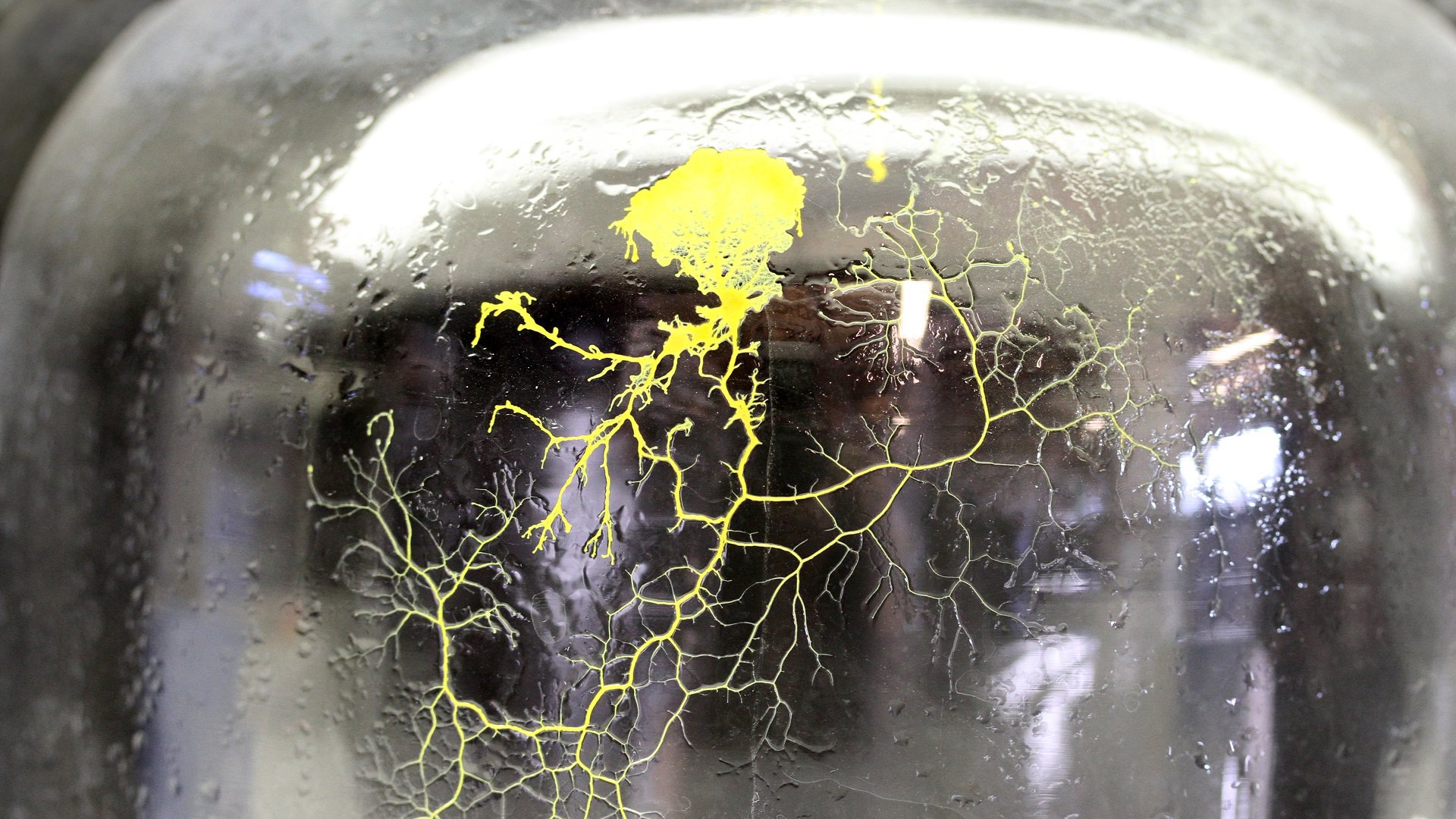Difficult matter
Astronomers have long been fascinated by the way galaxies are distributed through our universe and how they interrelate. The network through which galaxies are distributed is sometimes also called the ‘cosmic web’. However, one of the problems encountered by researchers is that this web is difficult to see because a large part of it consists of dark matter. This is a substance which we know exists on the basis of calculations, but which we can’t directly perceive. So in order to find out more about the nature of this mysterious web that connects galaxies, the astronomers called in the help of the lowly slime mould.
Slime mould simulation gives insight
The slime mould creates and uses threads to search for food in a particular way. On the basis of these search patterns, the group of researchers wrote a collection of calculation instructions, or algorithm. This algorithm was then used to perform simulations for the cosmic web. These simulations included information from no less than 37,000 galaxies. Comparisons between the results of the simulations and calculations about dark matter revealed that the slime mould is a good predictor of the cosmic web. Thanks to these new simulations it is finally possible to make the cosmic web ‘visible’ on a larger scale. Not bad for a single-celled microbe, right?
| https://iopscience.iop.org/article/10.3847/2041-8213/ab700c |

